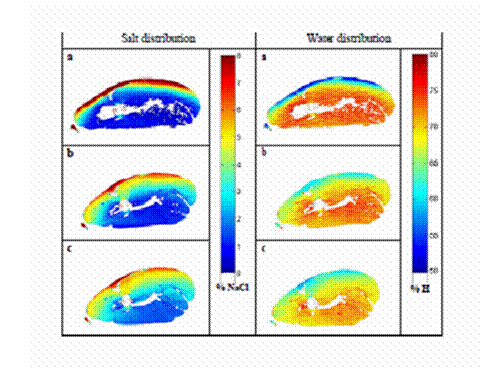Other approaches
Computed tomography (CT)
Computed tomography (CT) is a non-destructive analytical technique which uses high magnetic fields to obtain detailed information about tissue. It can determine the distribution of water, as well as sodium and water activity during the processing of hams. It can also estimate intramuscular fat levels. The technique is still in its experimental stages for application to the meat industry, but it could potentially be used in the future as a problem-solving service to the industry. It has some drawbacks, however: equipment and maintenance costs are very high and safety issues are a serious concern. In addition, it has been pointed out that interpretation of the findings could be affected by the chemical composition of the sample, as well as the choice of tube voltage (Haseth et al., 2008; Fulladosa and Gou, 2009). Nonetheless, if the technique is adopted by numerous meat processors, it is expected to become cheaper and standardized procedures will be developed.
Figure 2 shows the distribution of salt and water content in a dry-cured ham slice, obtained after the processing of data acquired using computed tomography. the images correspond to slices taken during the elaboration process:
(a) at the end of salting
(b) after 22 days resting
(c) after 45 days resting.
Figure 4.4 Salt and water in a slice of dry-cured ham (Source: Arnau, et al, 2009)
